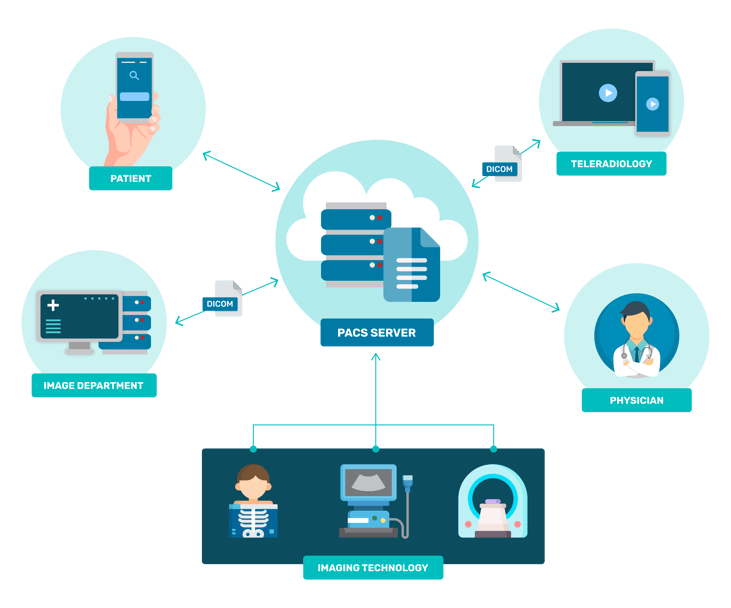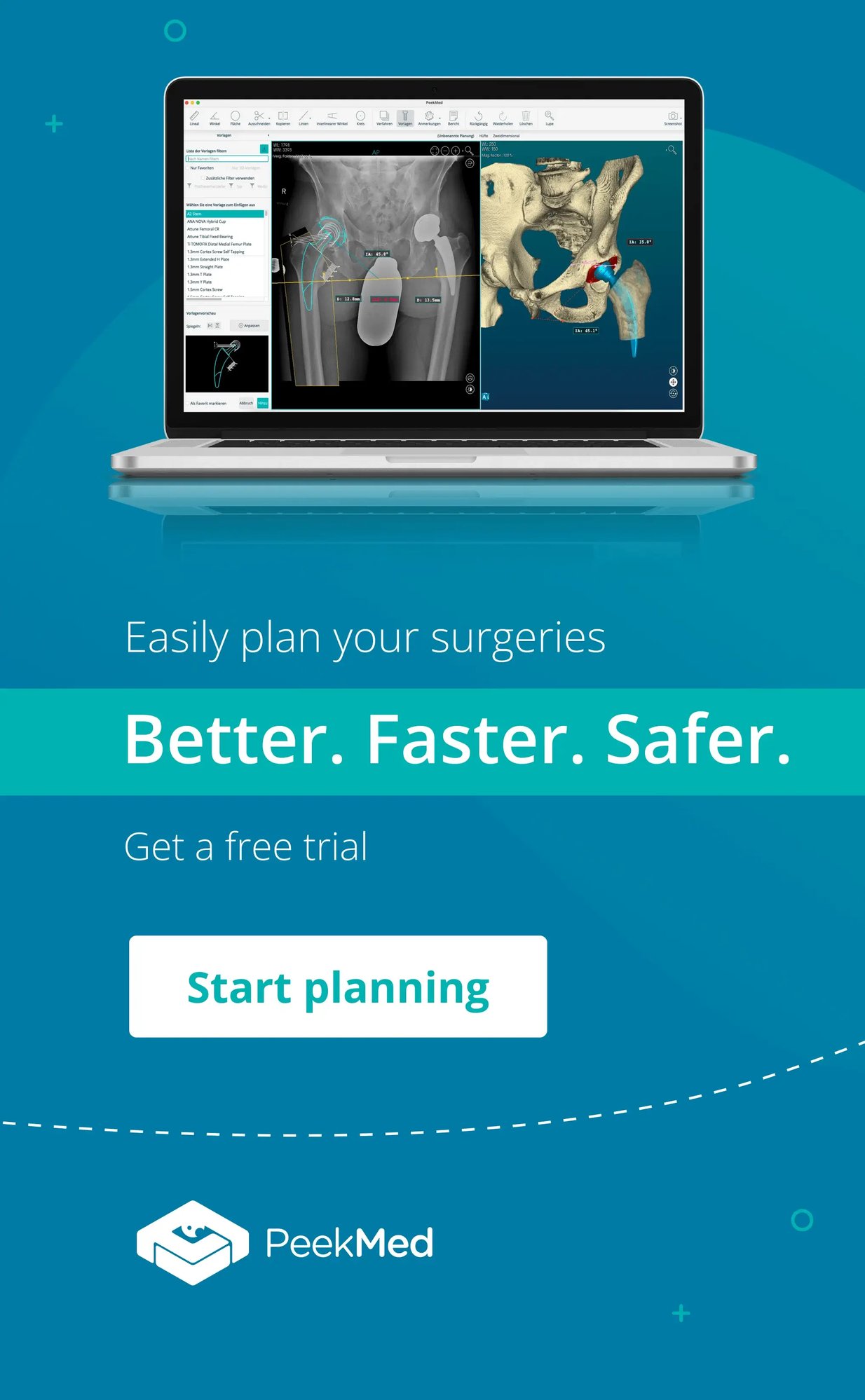PeekMed
"What is a PACS system in radiology?" "What does PACS stand for?" These are common questions in the medical industry, from doctors to IT specialists.
While PACS may be a buzzword, many are unsure of its exact definition or full potential.
In this article, we will try to help make it clear and explain how you can use it to your advantage. We will touch on topics such as:
What is a PACS system?
PACS is a medical abbreviation and stands for Picture Archiving and Communication System. If you want to define PACS, it's a medical imaging technology that provides access to several sources of information.
In short, it stores and transmits information captured by medical imaging that can be accessed by healthcare professionals across an institution.
This means that with PACS, healthcare institutions become more digital by removing the need for physical files.
However, the integration of radiology PACS into healthcare institutions goes beyond that.
If skillfully used, it can provide several gains, not only in management performance but also in clinical safety and diagnosis.
We will explore some strategies on how to use PACS to increase clinical performance later on. Before that, let’s try to clarify other subjects related to it.
How does PACS Imaging work?
After being captured by the typical imaging technology (such as CT, X-ray, or PET Scan) the digital images are transmitted digitally via the system.
This allows Physicians, healthcare professionals, and organizations (such as hospitals) to access and share them both internally and externally.
Think of it as you might think about a cloud-based solution – such as iCloud, Google Drive, or Dropbox. The use of PACS in radiology provides a digital storage solution that supplies remote access to images and reports.
How?
It’s all possible thanks to DICOM (Digital Imaging and Communications in Medicine), the universal format for medical image data storage and transfer.
DICOM allows for Radiology Information Systems (RIS) and more medical imaging systems to connect with and transfer data to systems at other healthcare facilities.
Allowing the image retrieval and distribution to be more efficient to be viewed and reported upon.
The use of PACS allows the quick and easy retrieval of images and other related data, overcoming the physical and time barriers associated with traditional film-based image retrieval, distribution, and display.

How to use PACS if you are a clinician
If you are a surgeon, working with PACS can enhance your workflow drastically.
Combined with orthopedic surgery, for instance, it makes surgical planning much more effective.
This is mainly because healthcare professionals can access a patient's radiology history and data.
Using PeekMed, which integrates completely with all PACS software solutions, the surgeon can easily import patients’ medical images. This allows for instant, full, integrated access to all the data.

After accessing the information the surgeon can advance with direct importation and start planning.
Thus, the surgeon can access all the advantages of orthopedic digital templating.
The digital storage also allows radiologists and surgeons to easily access previous exams and compare them to the most recent ones. This eliminates the need for patients to bring previous exams.
By these means, the clinician has a holistic view of the case and it impacts the use of medical reports.
As these start being stored digitally, it allows every specialty to access and comment on them, promoting better communication between teams and ultimately benefiting the patient.
Advantages and Benefits of PACS for Institutions
We’ve already touched on some of the benefits and advantages of Picture Archiving and Communication Systems.
But let’s explore them a bit deeper:
-
PACS replaces hard-copy medical images (e.g. film archives). As digital storage prices go down, it provides a growing cost and space advantage.
-
The previous point also leads to a standardization of the quality and lifetime of images. With PACS your institution can better oversee these processes. Thus, managers can easily identify gaps within the process.
-
At the same time, archives that are not often accessed can still be kept. This does not lead to cost increase, as physical space is not needed, and increases patient safety and service provided, as it becomes easier to search for specific files.
-
Team optimization is also a key factor. PACS allows remote access as it expands on the possibilities. With PACS, teams become more effective allowing a better distribution of information and operation enhancement.
Overall, all these points lead to a more efficient and more sustainable hospital, while still reducing overall costs.
PACS systems in the hospitals of the future
This is just the beginning when it comes to the advantages of PACS medical applications and their integrations with DICOM, which allows for better, faster communication between professionals.
The full integration opens doors to a new paradigm of how radiology and imaging relate to the rest of the healthcare industry, and this is just the beginning, as orthopedic technology can open many opportunities.
Right now we’re taking advantage of it to facilitate how information is accessed within an organization. However, we expect that, when properly combined with the internet, this will allow for global integrated solutions between different care providers.
Imagine a patient who has a trauma episode during a vacation abroad. Later, when he's back home, he wants his doctor to access the medical imaging he had done earlier. This will boost integrated multidisciplinary healthcare.
For now, we are to make the best of this technology and start using it to our advantage.



